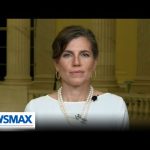A new Fox News segment broke fresh reporting this week about Thomas Matthew Crooks’ online footprint, and former Deputy Assistant Attorney General John Yoo appeared to warn Americans that the answers we’ve been given don’t add up. The clip highlighted reporting that a cache of social-media and account activity paints a darker, more complicated picture of the young man who fired on the Butler rally. Conservatives should be alarmed that this important new material only surfaced after public pressure from independent journalists and commentators.
The basic facts of the Butler attack remain grim and uncontested: on July 13–14, 2024, a gunman opened fire at a rally in Butler, Pennsylvania, grazing then-candidate Donald Trump, killing a rallygoer and wounding others before being stopped by law enforcement. The episode exposed catastrophic security lapses and has been the subject of multiple investigations by federal and congressional bodies. Those failures are not abstract policy questions — they are first-order national security problems that put the President and the public at risk.
Now comes the explosive claim at the center of the firestorm: reporters who sifted through archived accounts say Crooks left a substantial digital trail across platforms from YouTube to DeviantArt, including violent artwork, searches about past mass killings, and even profile pronoun usage that some outlets flagged as relevant to his identity evolution. That reporting, summarized in a New York Post exposé and amplified by conservative outlets, alleges the FBI either missed or failed to disclose years of warning signs that would have prompted scrutiny. If true, this is the kind of bureaucratic bungling that feeds distrust and conspiracy theories — and it must be answered.
Conservative voices and Republican officials have rightly demanded transparency and a full accounting of what federal investigators knew and when they knew it. White House spokespeople and lawmakers have publicly pressed for documents and timelines to be produced so Americans can see whether the Bureau’s public statements matched the files in their possession. These are not partisan requests for theatrics; they are necessary steps to restore confidence in institutions charged with protecting elected officials and preserving public safety.
The FBI has pushed back against some of the allegations, saying it never asserted that Crooks had no online footprint, while media personalities have accused the agency of obfuscation — a dispute that has played out in public with high-profile journalists and commentators on all sides. That back-and-forth matters because it reveals a transparency problem inside a law enforcement agency that must answer to Congress and the American people. Until the full chronology and forensic work is released, skepticism about what was known and why remains entirely reasonable.
Beyond questions of disclosure, the Butler episode exposed practical failures in interagency communication and security planning — local police warned federal agents about a suspicious person, but messages did not reach the teams positioned to act, according to investigative reporting. These systemic breakdowns demand not only whistleblower revelations but concrete reforms: clear radio interoperability, accountable chain-of-command protocols at large events, and an end to stonewalling when oversight committees ask for information. The country cannot afford to treat near-assassinations as teachable moments without penalties or change.
For conservatives who care about law and order, national security, and the integrity of our institutions, the emerging reporting on Crooks’ online activity is a clarion call: insist on a real, unredacted review and hold officials accountable if they ignored red flags. This is not about scoring political points; it is about ensuring that future gatherings are secure and that agencies tasked with protecting leaders and citizens do their jobs without partisan spin. The public deserves the truth, and every official who failed the nation should explain themselves under oath.



